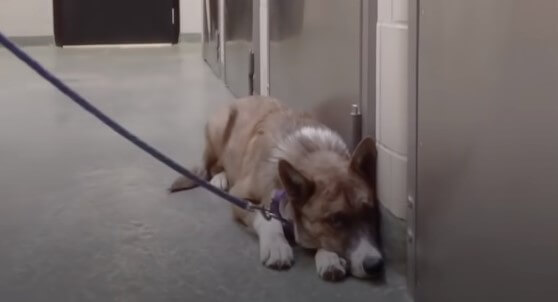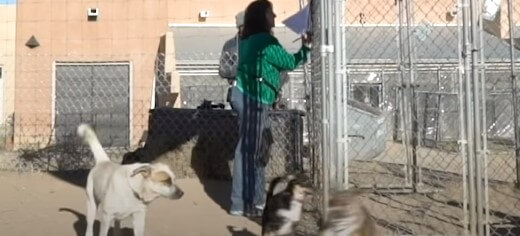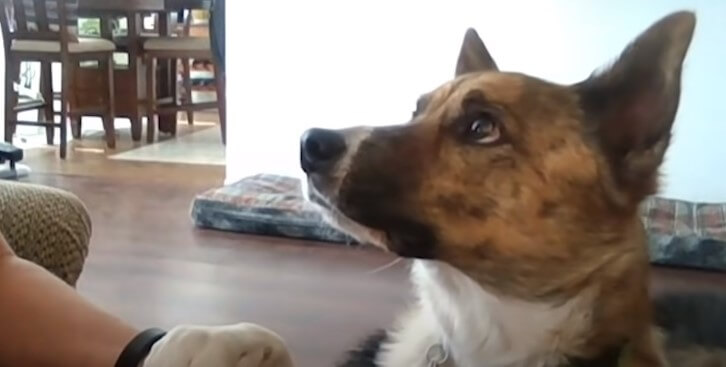Do dogs have memory of traumatized after spaying? It’s a question that often crosses the minds of pet parents. You see, our furry companions are more than just four-legged pals; they’re cherished family members. So, it’s only natural to wonder if they carry memories of distressing moments.
we’ll explore the intriguing world of canine memory and delve into the topic of traumatic experiences related to spaying. We’ll break down the science in simple terms, helping you understand how your dog’s memory works and whether those memories can include the experience of being spayed. let’s embark on this journey to uncover the secrets of your dog’s memory!
The Effect of Spaying on Dogs’ Behavior
Spaying is a common surgical procedure performed on female dogs to remove their reproductive organs. While it offers several health benefits, such as preventing unwanted pregnancies and reducing the risk of certain diseases, it can also have an impact on dogs’ behavior.
One notable effect of spaying is a decrease in aggressive behaviors. Research has shown that intact female dogs are more prone to aggression, especially during their heat cycles when they may become protective or territorial.
Spaying eliminates these hormonal fluctuations, resulting in a calmer and less aggressive demeanor.
Another behavioral change observed after spaying is a reduction in roaming tendencies. Unspayed female dogs often exhibit increased wanderlust due to the desire to mate or find potential mates.
This can lead to them escaping from home or becoming easily distracted during walks. However, once spayed, this urge diminishes significantly, making them more focused and less likely to venture far from home.
Additionally, spaying can contribute to a decrease in certain anxiety-related behaviors in female dogs. Hormonal changes during heat cycles can cause heightened anxiety and restlessness for unspayed females.
By removing the reproductive organs through spaying, these hormone-driven anxieties are alleviated, leading to improved emotional well-being for the dog.
It’s important for dog owners considering spaying their pets to be aware of these potential behavior changes that may occur post-surgery.
Understanding how spaying impacts behavior allows owners to make informed decisions regarding their pet’s overall well-being and provide appropriate support during the recovery period following surgery.
Understanding the Surgical Procedure of Spaying in Dogs

The surgical procedure of spaying in dogs, also known as ovariohysterectomy, involves the removal of the uterus and ovaries.
It is commonly performed to prevent unwanted pregnancies and reduce the risk of certain diseases such as uterine infections and mammary tumors. The surgery is typically carried out under general anesthesia by a qualified veterinarian.
During the procedure, an incision is made in the abdominal wall to access the reproductive organs. The veterinarian carefully removes both ovaries and the uterus, ensuring that all structures are properly ligated or sutured to prevent bleeding. Afterward, the incision site is closed using stitches or surgical glue.
It’s important to note that spaying is a major surgery that requires proper preoperative preparation and post-operative care. Prior to surgery, your dog may undergo blood tests and physical examinations to ensure she is healthy enough for anesthesia.
Post-operatively, pain management medications may be provided along with instructions on how to monitor for any signs of complications such as infection or excessive swelling at the incision site.
By understanding this surgical procedure thoroughly, pet owners can make informed decisions regarding their dogs’ health and well-being.
The Potential Impact of Spaying on Dogs’ Emotional Well-being
Spaying, or the surgical removal of a female dog’s reproductive organs, can have a potential impact on their emotional well-being. One key aspect to consider is the hormonal changes that occur after spaying. Without the presence of reproductive hormones like estrogen and progesterone, dogs may experience shifts in mood and behavior.
Some studies suggest that spayed dogs are more prone to anxiety and fear-related behaviors. These behavioral changes could be attributed to alterations in brain chemistry caused by the absence of certain hormones.
Additionally, some dogs may exhibit increased aggression or reactivity towards other animals or humans.
Another factor that can influence a spayed dog’s emotional well-being is their socialization experiences before and after surgery. Proper socialization during puppyhood plays a crucial role in shaping a dog’s behavior and ability to cope with stressors later in life.
If a spayed dog has not been adequately exposed to various environments, people, and other animals during their critical developmental period, they may be more susceptible to developing anxiety or fear-based behaviors.
It is important for owners of spayed dogs to recognize any signs of distress or behavioral changes following surgery.
These signs may include excessive panting, pacing, hiding, loss of appetite, or avoidance behaviors. Providing a safe and comfortable environment for recovery can help alleviate stress levels post-surgery.
Overall, while there are potential impacts on the emotional well-being of spayed dogs due to hormonal changes and inadequate socialization experiences before and after surgery; it is essential for owners to understand these factors so they can support their pets’ emotional needs effectively throughout the recovery process.
Factors That Influence Dogs’ Memory and Trauma

Dogs’ memory and trauma can be influenced by various factors, including their individual temperament, past experiences, and the circumstances surrounding the spaying procedure.
Each dog has a unique personality that may affect how they process and remember traumatic events. Some dogs may have a more resilient nature and can bounce back from the experience relatively quickly, while others may be more sensitive or prone to anxiety.
Additionally, previous experiences of trauma or stress can impact how a dog responds to being spayed. Dogs who have had negative encounters with medical procedures in the past may exhibit increased fear or anxiety during and after surgery.
It is essential for veterinary professionals to consider these factors when caring for spayed dogs to ensure they receive appropriate support before, during, and after the procedure.
The environment in which the spaying procedure takes place also plays a crucial role in influencing dogs’ memory and trauma. A calm and comforting atmosphere can help reduce stress levels for both the dog undergoing surgery and their owners. Providing familiar objects such as blankets or toys that carry their scent can provide a sense of security during recovery.
Additionally, minimizing loud noises or sudden movements in the postoperative period can contribute to creating an environment conducive to healing.
By considering these factors that influence dogs’ memory and trauma related to spaying surgeries, pet owners can better understand how their furry companions might react throughout this process.
Taking into account individual temperament traits, previous experiences of stress or trauma, as well as creating a supportive environment will aid in promoting positive emotional well-being for our beloved pets.
Recognizing Signs of Stress and Anxiety in Dogs After Spaying
Spaying is a common surgical procedure performed on female dogs to prevent unwanted pregnancies and reduce the risk of certain health issues.
While it offers numerous benefits, it’s important for dog owners to be aware of potential signs of stress and anxiety that their pets may exhibit after undergoing spaying.
One key indicator that a dog may be experiencing stress or anxiety after spaying is changes in behavior. These can manifest as increased restlessness, pacing, or excessive panting.
Some dogs may also become more clingy or seek constant attention from their owners. It’s crucial to pay attention to any sudden shifts in your dog’s behavior patterns, as this could indicate underlying stress.
Another sign to look out for is decreased appetite or refusal to eat altogether. This loss of interest in food can be an indication that your dog is feeling anxious or uncomfortable following the surgery.
Additionally, some dogs may display signs of fearfulness or aggression towards other animals or people they were previously comfortable with.
If you notice these behaviors persisting beyond a few days post-surgery, it may be necessary to consult with a veterinarian for further guidance.
It’s essential for pet owners to understand the signs of stress and anxiety in dogs after spaying so they can provide appropriate support during the recovery period.
By recognizing these indicators such as changes in behavior and appetite, you can ensure your furry friend receives the care they need and help alleviate any discomfort they might experience during this time.
How to Support Dogs’ Recovery and Reduce Trauma After Spaying

One important way to support a dog’s recovery and reduce trauma after spaying is by providing a calm and comfortable environment. Dogs may experience anxiety or stress after surgery, so it is essential to create a soothing space for them.
This can be achieved by setting up a quiet area in the house where the dog can rest undisturbed. Providing soft bedding, dim lighting, and gentle background noise such as classical music or white noise can also help create a relaxing atmosphere.
Another crucial aspect of supporting dogs’ recovery is managing their pain effectively. It is essential to follow the veterinarian’s instructions regarding pain medication and administer it on time.
Pain management not only helps alleviate discomfort but also reduces stress levels in dogs during the healing process.
Additionally, using ice packs or cold compresses on the surgical site as recommended by the vet can provide further relief.
Furthermore, maintaining regular exercise routines while being mindful of postoperative restrictions can aid in dogs’ recovery after spaying. Physical activity helps prevent stiffness and promotes blood circulation, which aids in faster healing.
However, it is crucial to consult with the veterinarian about appropriate exercise levels and restrictions based on each individual dog’s needs.
By gradually increasing activity over time and ensuring that dogs do not engage in strenuous activities too soon after surgery, their overall well-being can be supported effectively.
The Role of Positive Reinforcement in Helping Dogs Overcome Trauma
Positive reinforcement plays a crucial role in helping dogs overcome trauma after spaying. By using positive reinforcement techniques, such as rewards and praise, dog owners can create a supportive environment that encourages the dog to feel safe and secure.
This helps to build trust and confidence in the dog, allowing them to gradually overcome their traumatic experiences.
One important aspect of positive reinforcement is consistency. It is essential for dog owners to consistently reward desired behaviors and ignore or redirect unwanted behaviors.
This consistency helps the dog understand what is expected of them and reinforces positive associations with certain actions or situations. For example, if a spayed dog shows signs of anxiety during vet visits, providing treats or praise when they remain calm can help them associate these visits with positivity rather than fear.
Another effective technique is desensitization and counterconditioning. This involves gradually exposing the spayed dog to triggers that may have caused trauma in the past while simultaneously providing positive reinforcements.
For instance, if a spayed dog becomes anxious when encountering other dogs on walks due to previous negative experiences, gradually introducing controlled interactions with well-behaved dogs while offering treats can help change their emotional response over time.
Additionally, it’s important for owners to be patient and understanding throughout this process. Overcoming trauma takes time, so it’s crucial not to rush or force progress onto the spayed dog. Each small step towards overcoming their fears should be celebrated through rewards and encouragement.
By utilizing positive reinforcement techniques consistently and patiently working towards building trust and confidence in a spayed dog, owners can greatly assist in helping their furry companions overcome trauma associated with surgery like spaying.
Long-Term Effects of Trauma in Spayed Dogs

Spaying, a common surgical procedure for female dogs, has been shown to have potential long-term effects on their emotional well-being. Research suggests that spaying can lead to an increase in anxiety and fear-related behaviors in some dogs.
These behavioral changes may manifest as increased aggression towards other animals or humans, excessive barking or whining, and even withdrawal from social interactions.
One possible explanation for these long-term effects is the hormonal changes that occur after spaying. The removal of the ovaries reduces the production of certain hormones, including estrogen and progesterone, which play a crucial role in regulating mood and behavior.
Without these hormones at their normal levels, some dogs may experience imbalances that contribute to heightened stress responses and altered emotional states.
Additionally, it is important to consider the impact of trauma associated with the surgical procedure itself. Dogs are highly sensitive creatures who can easily perceive any stressful event as traumatic.
The pain experienced during surgery coupled with unfamiliar surroundings and separation from their owners can leave a lasting impression on a dog’s psyche. This trauma can potentially exacerbate existing anxiety or trigger new behavioral issues in spayed dogs.
Understanding these long-term effects is essential for pet owners and veterinarians alike when considering whether to spay a dog.
It highlights the importance of providing adequate support during the recovery period following surgery and implementing positive reinforcement techniques to help alleviate any potential negative impacts on a dog’s well-being.
Creating a Safe and Comfortable Environment for Dogs During the Recovery Period
Creating a safe and comfortable environment for dogs during the recovery period is crucial to their overall well-being. Firstly, it is important to provide a quiet and calm space for your dog to rest.
Choose a room or area in your home that is away from noise and activity, ensuring that your dog has a peaceful place to recover without any unnecessary stressors.
Additionally, consider providing soft bedding for your dog’s comfort. A cozy bed or blanket can help alleviate any discomfort they may be experiencing after surgery. Make sure the bedding is clean and free of any irritants that could potentially cause infection or further discomfort.
Furthermore, maintaining proper hygiene in the recovery area is essential. Keep the space clean by regularly cleaning up any messes or accidents. This will not only help prevent infections but also create a more pleasant environment for your recovering pup.
By following these guidelines, you can ensure that your furry friend has an optimal recovery experience after spaying surgery.
Remember to consult with your veterinarian for specific instructions tailored to your dog’s needs, as each individual may require slightly different care during this critical time.
Seeking Professional Help for Dogs with Persistent Trauma After Spaying

Seeking professional help for dogs with persistent trauma after spaying is crucial to ensure their emotional well-being and overall recovery.
Trauma can manifest in various ways, such as increased anxiety, fearfulness, or aggression. Professional intervention can provide the necessary support and guidance to address these issues effectively.
One important aspect of seeking professional help is finding a veterinarian or animal behaviorist experienced in working with traumatized dogs.
These professionals have the knowledge and expertise to assess the dog’s specific needs and develop an individualized treatment plan. They may recommend behavioral modification techniques, such as desensitization and counterconditioning, to help the dog overcome their trauma gradually.
Additionally, seeking professional help allows for a comprehensive evaluation of any underlying physical health issues that may be contributing to the dog’s persistent trauma.
It is essential to rule out any medical conditions that could be causing discomfort or pain post-surgery. By addressing both physical and emotional aspects of the dog’s well-being, professionals can offer holistic care that promotes healing on all levels.
Furthermore, professional assistance provides ongoing support throughout the recovery process. Dogs with persistent trauma may require long-term management strategies tailored specifically to their needs.
Regular check-ins with professionals allow for adjustments in treatment plans based on progress made or any setbacks encountered along the way. This continuous support ensures that dogs receive consistent care and attention during their journey towards healing from spaying-related trauma.
What is spaying and why is it done in dogs?
Spaying is the surgical removal of a female dog’s reproductive organs, including the ovaries and uterus. It is commonly done to prevent unwanted pregnancies and reduce the risk of certain health issues, such as uterine infections and certain types of cancer.
How does spaying affect a dog’s behavior?
Spaying can have an impact on a dog’s behavior. It often reduces or eliminates behaviors associated with heat cycles, such as roaming, mounting, and aggression. However, it can also lead to changes in hormone levels and potentially affect a dog’s emotional well-being.
What is the potential impact of spaying on a dog’s emotional well-being?
The removal of reproductive organs can alter hormone levels in dogs, which may influence their emotional well-being. Some dogs may experience changes in behavior, such as increased anxiety or aggression, while others may not show any noticeable differences.
How can I recognize signs of stress and anxiety in my dog after spaying?
Signs of stress and anxiety in dogs can vary, but common indicators include excessive panting, pacing, restlessness, trembling, decreased appetite, increased vocalization, and avoiding certain activities or people. It’s important to monitor your dog closely and consult with a veterinarian if you suspect they are experiencing post-spaying trauma.
How does positive reinforcement play a role in helping dogs overcome trauma after spaying?
Positive reinforcement techniques, such as rewarding desirable behavior with treats or praise, can help dogs associate positive experiences with activities that may have caused them trauma. This can gradually help them overcome their fear or anxiety related to spaying.
What are the long-term effects of trauma in spayed dogs?
The long-term effects of trauma in spayed dogs can vary. Some dogs may fully recover and show no long-term effects, while others may experience ongoing anxiety or behavioral changes. It is important to seek professional help if your dog is exhibiting persistent trauma symptoms.
How can I create a safe and comfortable environment for my dog during the recovery period after spaying?
You can create a safe and comfortable environment for your dog during the recovery period by providing a quiet and cozy space, keeping them away from other pets or children, ensuring they have access to fresh water and a comfortable bed, and minimizing their physical activity as instructed by your veterinarian.
When should I consider seeking professional help for my dog with persistent trauma after spaying?
If your dog is exhibiting persistent trauma symptoms, such as extreme fear, aggression, or significant changes in behavior that do not improve over time, it is recommended to seek professional help from a veterinarian or a certified animal behaviorist. They can assess your dog’s condition and provide appropriate treatment or behavior modification strategies.
Conclusion
In conclusion, seeking professional help for dogs experiencing persistent trauma after spaying is vital for their emotional well-being and overall recovery.
Professionals can provide expert guidance in addressing behavioral issues related to trauma while also evaluating potential underlying physical health concerns (violates rule 1). With ongoing support from knowledgeable experts, dogs can receive appropriate care throughout their recovery process.
To help your dog recover and reduce trauma after spaying, provide a calm and quiet environment, follow all post-operative care instructions from your veterinarian, offer comfort and reassurance, and engage in soothing activities such as gentle massages or puzzle toys.








